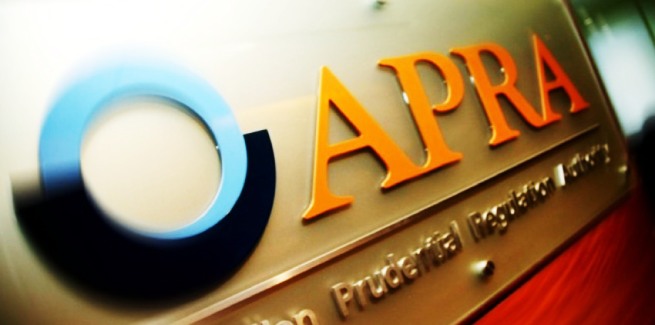Have you heard about the most recent APRA lending changes?
On Wednesday 6th October 2021, the Australian Prudential Regulation Authority (APRA) sent a letter to all authorised deposit-taking institutions (ADIs) – that includes banks, building societies and credit unions – to advise them of changes to mortgage serviceability buffers.
This letter stated that the minimum interest rate buffer on home loan applications needed to increase from 2.5 to 3 percentage points, effective from 1st November 2021. Thus, bringing the buffer in line with international practice.
We’ll discuss what the APRA lending changes mean for everyone, from first-time buyers to property investors with large portfolios.
On the go? Here’s 30 seconds of take outs:
- APRA have asked banks to increase their mortgage serviceability buffers from 2.5% to 3.0%.
- The APRA lending changes come into effect for new loan applications after 1st November 2021.
- Residential real estate values have jumped 20.3% in the past year.
- In June quarter 2021, one fifth of new approved home loan applications were for people who borrowed more than 6 times their income.
- It’s estimated that the lending change will reduce maximum borrowing capacity (MBC) by 5%.
- The MBC for an average family might be reduced by approximately $35,000.
- The impact of the lending changes is likely to be felt more significantly by first-home buyers and investors with existing debts.
Keep reading >>
Why has APRA increased the lending buffer?
In Australia, the average household debt, in comparison to income, is historically high. APRA acknowledged in its letter that current residential mortgage lending is “underscored by very low interest rates and rapidly increasing housing prices.” And the rate of demand for loans is expected to continue to exceed household income for the near future, driving even more debt.
Although the Australian banking sector is currently sound, these increasing levels of debt are risky for the financial system. Therefore, APRA, with the support of the Council of Financial Regulators (CFR), is taking this step to reduce financial stability risks.
APRA chairman Wayne Byres said: “While the banking system is well capitalised and lending standards overall have held up, increases in the share of heavily indebted borrowers, and leverage in the household sector more broadly, mean that medium-term risks to financial stability are building.”
How does this buffer contribute to less risk?
Residential real estate values have jumped 20.3% (nationwide average) in the last 12 months. Although the market is strong, many are concerned that this level of credit growth is not sustainable. APRA noted that in the June quarter of 2021, more than one in five new home loan applications were approved to people who were borrowing more than six times their (pre-taxable) income.
Although the economy is expected to gradually recover post lockdowns, lenders still need to ensure that their customers can afford to service their loans. The 3% buffer provides a safe contingency to allow for changes in the borrower’s income or expenses, or any increases in interest rates during the lifetime of the loan. APRA estimates this lending change will reduce a household’s “maximum borrowing capacity” by approximately 5%.
How is the lending buffer changing?
Most ADIs are currently operating with a buffer of 2.5 percentage points. From 1st November, this will increase to 3.0 percentage points over the loan interest rate. This means that banks will have to ensure that any new borrowers can still afford their mortgage repayments if their home loan interest rates rise to be 3 percentage points above their current rate.
For example, if you were to apply for a mortgage with an interest rate of 2%, the bank needs to allow a 3% buffer. That means they will ask for evidence to make sure you can make repayments of a 5% interest rate. If you can’t, your loan application will be denied.
How will the APRA lending change be implemented?
Each bank/lender will implement these changes differently, so, as always, it’s best to speak to your mortgage broker/bank directly to find out how this will affect you.
The expectation is that any existing pre-approvals will be honoured. For example, the Commonwealth bank have assured their customers that if they have exchanged contracts, even if they haven’t settled yet, they will honour their existing loan approval. Therefore the 3% buffer will only apply to any new applicants.
Although lenders have flexibility with how they intend to implement the increased buffer, there will be a fine if they hold more reserves against losses, so swift implementation is expected to avoid any drop in profits.
What does it mean for my home loan application?
The reality is that most people don’t borrow at their full capacity, so these changes may not affect you. In fact, the Commonwealth Bank says only 8% of its home loan customers borrow the maximum amount they are approved for.
The 3% serviceability buffer means that the maximum amount you can borrow relative to your income and expenses will be lower than it was under the old serviceability test of 2.5%.
For example, if the most you could borrow up until now was $500,000, then after November 1st you will only be able to borrow $475,000. RateCity.com.au estimate that the maximum borrowing capacity for the average Australian family could potentially be reduced by approximately $35,000. That assumption is based on a household with one full-time worker, one part-time worker and 2 dependent children.
| Current borrowing capacity | 5% less borrowing capacity | Difference |
| $500,000 | $475,000 | $25,000 |
| $600,000 | $570,000 | $30,000 |
| $750,000 | $712,000 | $37,000 |
| $1,000,000 | $950,000 | $50,000 |
What does the APRA lending change mean for first-home buyers?
Mortgages have increased significantly since the Reserve Bank started reduced interest rates in 2019. In NSW, the average mortgage has jumped by 36% to $755,000 while in Victoria it has increased by a third to $634,000.
The Housing Industry Association (HIA) is concerned that the new rule will make it increasingly difficult for first-home owners to get on the property ladder. HIA’s chief economist, Tim Reardon said “Over 90% of renters aspire to own their own home but less than half of them expect that they will ever achieve this goal.” This “will make this goal even harder“.
How will the APRA lending changes affect investors?
Although the interest rate buffer increase applies to all new borrowers, APRA said the impact is likely to be felt more by investors than owner-occupiers. That’s because investors tend to borrow at higher levels of leverage and often have other debts.
APRA says the increased buffer was essential due to a significant increase in the borrowing of large amounts in recent months. APRA also confirmed that, together with other members of the CFR, they are monitoring any increase in key risk trends.
They said “Growing portfolio concentrations of high debt-to-income loans also need to be monitored closely. Should concentrations of this lending continue to rise, APRA would consider the need for further macroprudential measure.”
Source: www.apra.gov.au
As always, at Capital Properties, we’ll do our best to keep you informed of these, and other changes in the property market. To make sure you never miss out, join our like-minded, Switched-on Property Investors Program and learn about future possibilities.
While you’re here, book your free Capital Properties discovery session and check out our free investor tools: Online property investment toolkit | Book Your Pinnacle Program Review






